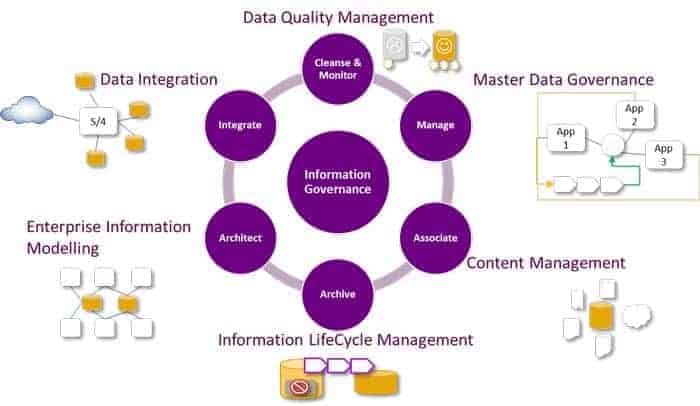More than interfaces


Most companies will not easily be able to leverage the added value of SAP S/4: Simplified and modernized modules require an adapted way of working and integration needs arise.
Integration here means much more than interfaces to other systems - namely the management of the data/information required for the business processes.
SAP offers various Enterprise Information Management (EIM) solutions for this purpose to provide decision-makers and users with reliable data.
Of elementary importance is master data, which is used in all important business processes. EIM also includes content management with data linking to achieve insights for the development of new business models.
For EIM, Alegri also sees progress in the ease of integrating systems, solutions or services, whether on premise, from the cloud, SAP or other vendors.
In Hana 2.0, many of these functionalities are already available in the Hana platform with Hana Smart Data Access, Hana Smart Data Integration and Smart Data Quality.
The demand for quality, topicality and availability of data in the sense of integration is rising sharply. In the future, the use of the same data in different scenarios will gain in importance; the decentralized data storage and use that predominates from a module perspective will decline.

However, the necessary information management processes and tools are often not yet in place or do not meet the new requirements.
In addition, there is uncertainty about the correct assessment of the criticality of the data and the lack of necessary specifications regarding information governance. The following aspects should be considered:
- Policies and Standards: Fundamental decisions on data definitions and architectures must be made. It must be ensured that both legal requirements are met and the company's own compliance requirements are taken into account.
- Metrics: It is necessary to determine which information is to be provided via which channels: Who needs what, where and when?
- People: In addition to clarifying the "ownership" of data/information, access to the data must also be defined: Who is allowed to do what with the data, when and where?
- Processes: To ensure that the necessary information is available in sufficient quality, appropriate processes for generating, updating and deleting data must be introduced.

Master Data moves into focus
Among many other simplifications in S/4 Hana, the "Business Partner Approach" represents a fundamental change in the way of working. For example, there is no longer a distinction between debtors and creditors; instead, there is a business partner who can act in different roles.
A master data set will therefore be used in different scenarios in the future. Central master data will also become essential elsewhere, such as in the integration of solutions from the SAP cloud portfolio that use data from a central Hana platform.
Alegri's experience was that before deploying an SAP cloud offering, it was necessary to clean up the required master data - a good time to push for the introduction of master data management.
With Master Data Governance (MDG), SAP provides a mature product for the consolidation and harmonization of master data across the entire system landscape - regardless of system or application.
Using MDG under Hana also brings significant benefits by speeding up searches and adding new functionalities such as similarity search.
Recommendations
Despite the numerous tools from SAP and other manufacturers in the EIM environment, no company has yet reached its goal through additional software alone. Alegri therefore always starts by setting up the necessary organization together with the customer and then supports with a meaningful analysis of the data stock.
Here, it is less important to know how many gigabytes are located where. Rather, the goal is to obtain a clear picture of what data is generated where in the company, who "owns" it, what value it has for the company, or what legal requirements it is subject to.
In order to fulfill these tasks, roles and responsibilities in information management must also be adapted or even introduced.
Functional owners such as business process managers must be involved. If a company wants to turn to a concrete implementation right away, Alegri believes that master data management is a very good place to start.






